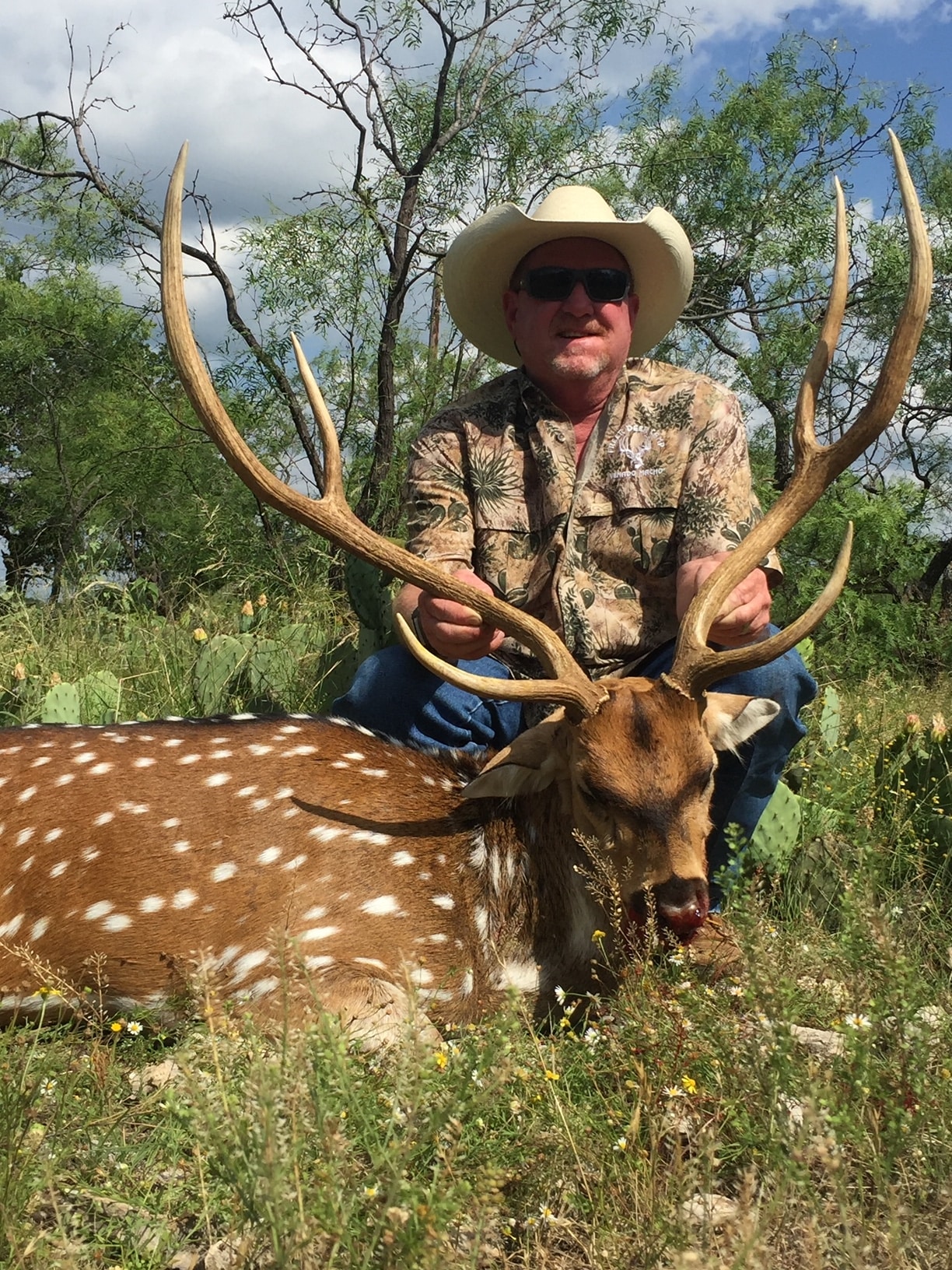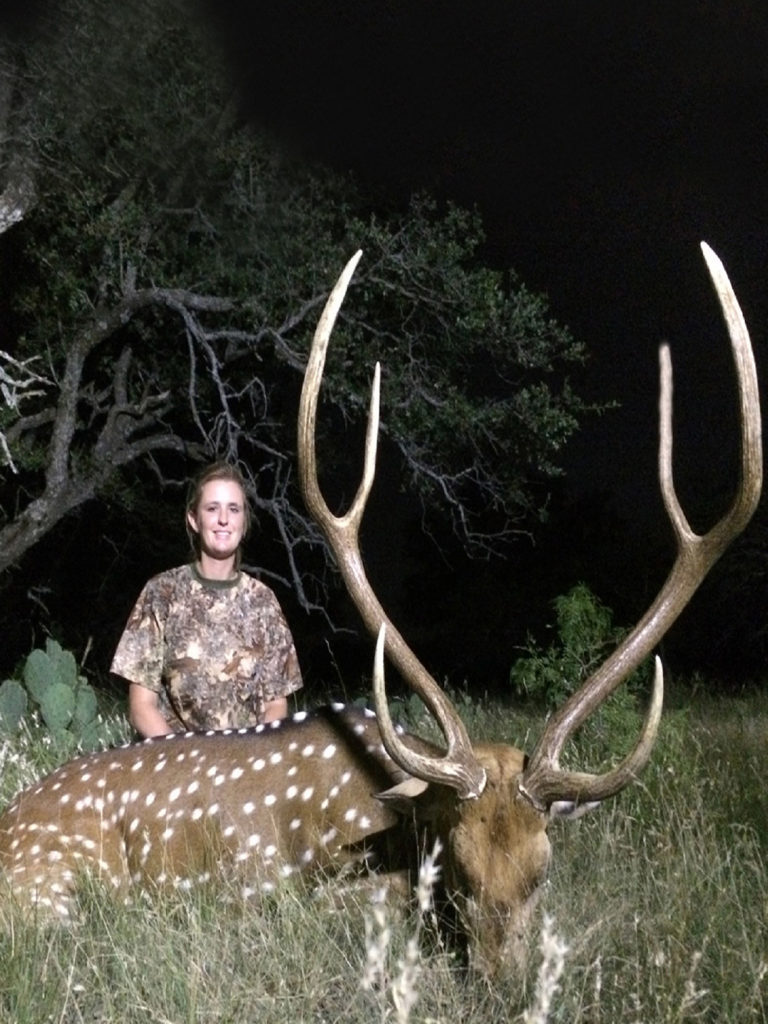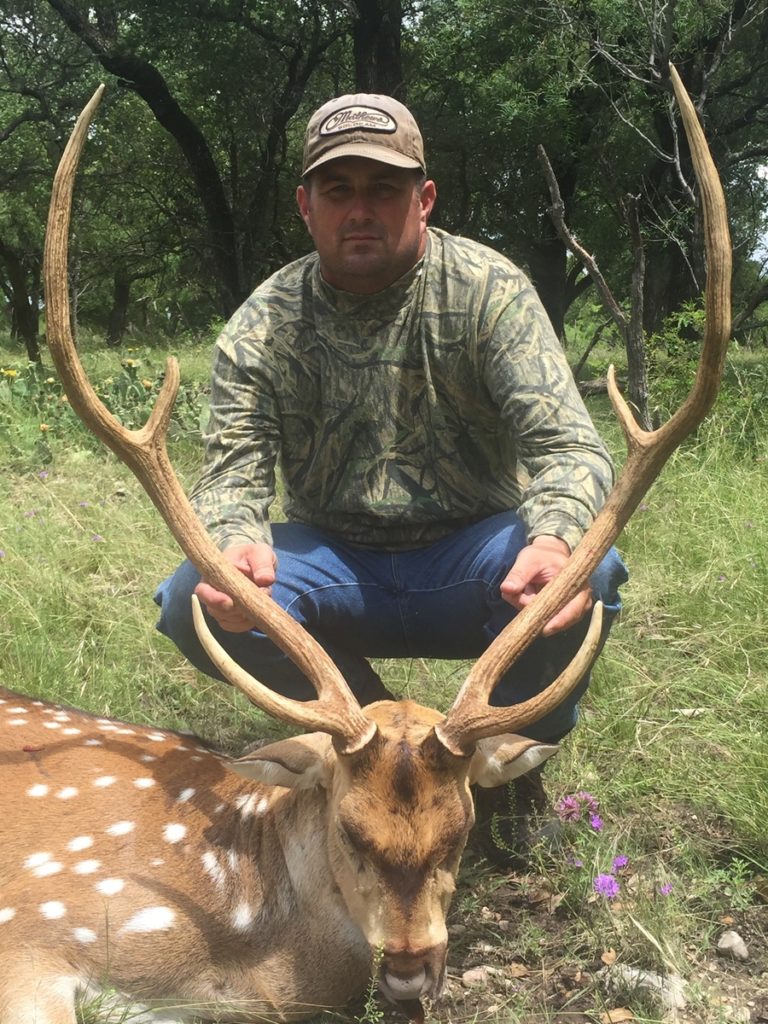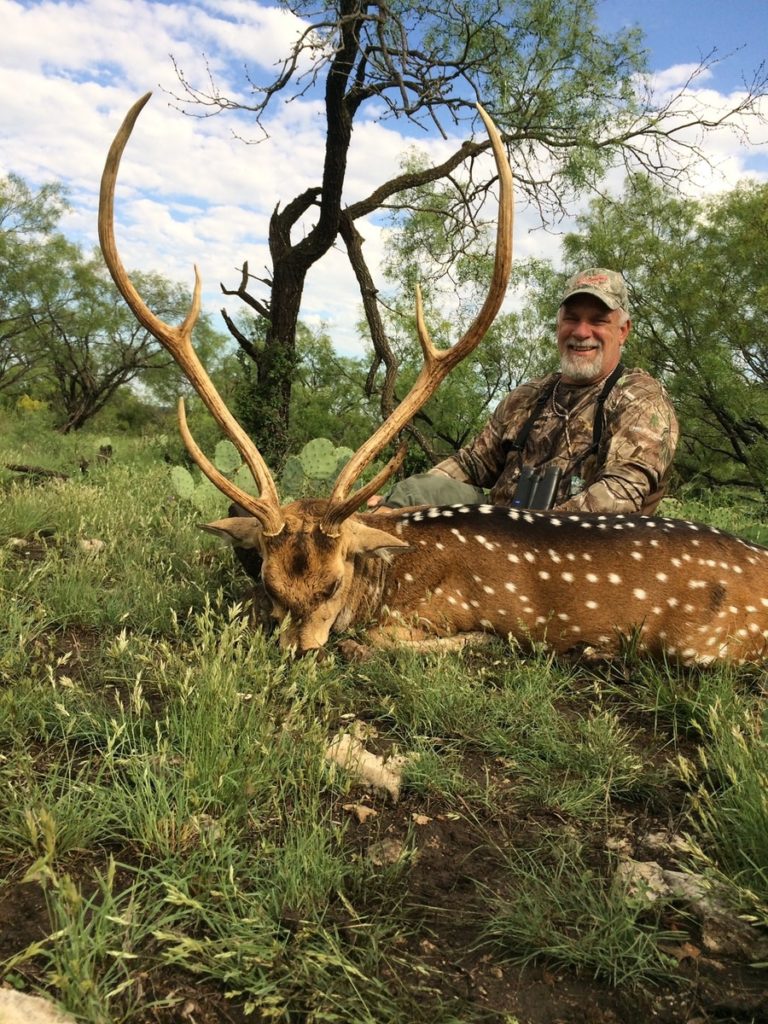Axis Deer
Native to India and Ceylon, the axis deer, chital, or spotted deer is generally rufous fawn in color,
with white spots covering both their summer and winter coats. Their throat, stomach, and under-tail areas
are white and a dark dorsal stripe runs from the back of the head to the tip of the tail. An axis male will
stand about 36 inches high at the shoulder and weigh up to 200 pounds. The antlers of the adult male are
reddish brown in color and the beam, which curves backwards and outwards in a lyre-shaped formation, is
usually about 30 to 36 inches long. There are normally 3 tines on each side.
What is an Exotic?
The term exotic refers to medium to large sized nonindigenous or non-native
mammals and birds that landowners have introduced onto Texas ranches and properties in
either a confined or free-ranging status. Most of the common species of exotic mammal
currently found on Texas ranches fall under one of the following three major scientific
families: Cervidae (deer), Bovidae (cattle and antelope) and Equidae (horses and zebras).
Exotic birds most likely to be encountered on Texas ranches are the large, flightless species
classified as Ratites (the ostrich from Africa, emu from Australia and rhea from South
America).
How long have exotics been roaming Texas ranches?
The first release of exotics onto Texas ranches occurred in 1930, when a group of nilgai antelope
was released on the King Ranch in South Texas.
How many exotics are there in Texas?
A statewide survey of landowners, conducted by the Wildlife Division of the Texas Parks and
Wildlife Department in 1988, resulted in an estimated 164,257 animals of 67 different species of exotics,
with 90,400 animals confined behind fences and 73,857 animals free-ranging (able to move freely from one
ranch to another).
Where are most of the exotics found in Texas?
The 1988 survey revealed that exotic species occur in 137 of the 254 counties in
the State and were reported confined on 486 ranches totaling 2,361,744 acres.
Approximately 68% of all confined exotics were found in the Edwards Plateau (Texas Hill
Country) region. The South Texas region accounted for the bulk of the free-ranging exotics
– 51% of the statewide total.
Reference: Exotics in Texas by Max Traweek and Roy Welch, Texas Parks and Wildlife Department




